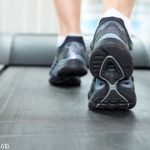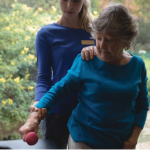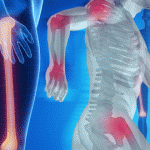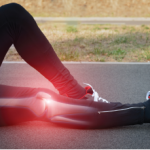New research recently found that, when combined with standard treatment, diet and exercise regimens are cost effective for overweight and obese patients with knee OA…

Tips for Interdisciplinary Pain Management in Older Patients
CHICAGO—Rheumatology healthcare providers should embrace collaborative approaches to manage chronic musculoskeletal pain in older adult patients, including models of care that involve multiple providers, patients and their caregivers. That was the message delivered by two speakers in the Interdisciplinary Management of Chronic Musculoskeletal Pain in Older Adults session at the 2018 ACR/ARHP Annual Meeting. “As…
Hip Exercises May Improve Walking, Pain with Knee Arthritis
(Reuters Health)—Patients with knee osteoarthritis (OA) can add hip-strengthening exercises to their workout to improve the ability to walk and maybe reduce pain, according to a research review. Based on pooled data from eight clinical trials with a total of 340 patients, hip strengthening exercises involving weights or elastic bands would help the most, the…

A Step Further: Results from the 1st ACR/ARHP Annual Meeting Walking Challenge
With more than 152,000 taken steps in four days, top honors in the first-ever ACR/ARHP Annual Meeting Walking Challenge go to Mark Phelan, MD…

Rheumatoid Arthritis & Exercise Avoidance
“Don’t believe everything you think,” said Allan Lokos, the founder and guiding teacher of the Community Meditation Center located in New York City’s upper west side. These words may be especially important for those dealing with chronic pain, finds new multicenter research. The study, “Trajectories of Fear-Avoidance Beliefs on Physical Activity Over Two Years in…

Promising Avenues in Myositis: Research Targets Disease Specificity
AMSTERDAM—Research in myositis treatments is beginning to find its way, with investigators pursuing avenues special to the disease so therapy for patients may no longer involve piggybacking on existing treatments for other illnesses, an expert said at EULAR: the Annual European Congress of Rheumatology. “Finally, in myositis there are targets being investigated that are more…

Tips to Get Knee Replacement Patients to Increase Their Physical Activity
Although total knee replacement (TKR) surgery can improve pain and function in individuals with knee osteoarthritis (OA), many patients who are sedentary before undergoing TKR don’t increase their physical activity levels after surgery. A new study led by Elena Losina, PhD, of the Department of Orthopaedic Surgery at Brigham and Women’s Hospital in Boston, examined…

Healthcare Providers Should Encourage Exercise for OA Patients
A systemic review supports the ideas that exercise benefits the physical and mental health of patients experiencing pain related to hip and/or knee osteoarthritis (OA). Overall, research indicates that patients who exercised had slightly lower rates of pain and greater physical function, as well as slightly improved self-efficacy and social function…
Tai Chi at Least as Good as Aerobic Exercise for Fibromyalgia
NEW YORK (Reuters Health)—Tai chi improves fibromyalgia symptoms at least as effectively as aerobic exercise, according to a new trial. Aerobic exercise is the most commonly recommended non-drug treatment for fibromyalgia, Dr. Chenchen Wang of Tufts University School of Medicine in Boston and her colleagues note in The BMJ, online March 12.1 However, Dr. Wang…

More Physical Activity Counseling Urged
New research from the CDC evaluated the prevalence of healthcare provider counseling for physical activity as a management strategy for arthritis. Researchers found that although healthcare provider counseling for exercise has increased during the past decade, 40% of patients with arthritis do not receive this counseling, resulting in a greater prevalence of physical inactivity for this patient population…
- « Previous Page
- 1
- 2
- 3
- 4
- 5
- …
- 7
- Next Page »